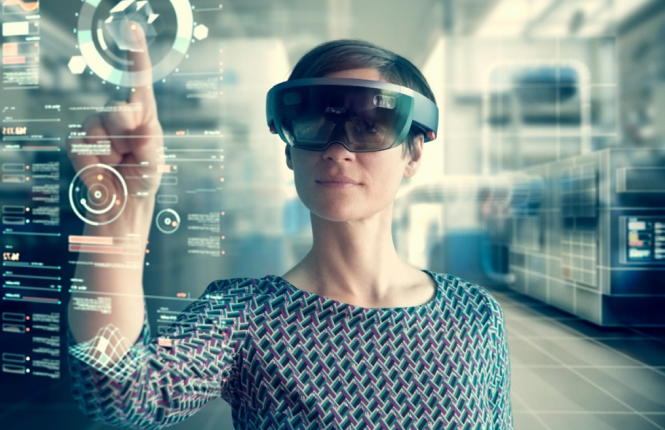Artificial intelligence & Human Operator in manufacturing
Artificial intelligence (AI) has been used in manufacturing systems to perform complex calculations for supporting production activities and decision-making. Moreover, AI is used also by operator support systems to provide personalized support to human operators.
In the context of Industry4.0, the use of digital technologies, robots, and AI in production lines has significantly increased. In particular, AI methods can be beneficial for maintenance, enabling advanced approaches such as predictive analytics and condition monitoring, as well as production scheduling, quality inspection and control, logistics, and other complex production activities Error! Reference source not found., [2], [3]. Moreover, AI is widely used in the Human-Robot Collaboration (HRC). A detailed example is presented in the [7] survey where the authors use AI wearables in order to provide customized operator support from the robot side for shared tasks, automatically adapting to the operator’s needs and preferences.
Considering the human at the center of modern production systems, the high amounts of IoT data enable AI to contribute to providing a new experience to the human factor, improving its working conditions while at the same time keeping production efficiency at high levels. In particular, several frameworks and applications use AI in order to provide adaptively and personalize support to the users based on their preferences [4], [5]. In the aforementioned frameworks, the support is based on the operator’s characteristics, such as a profile including the personnel characteristics (i.e. age, skills, country, native language). Furthermore, the system evaluates the user during the performance of their tasks by calculating the time and his/her errors and finally asks for his/her feedback. Subsequently, the system filters and processes by applying machine learning approaches such as k-nearest neighbour (K-NN), Decision trees, etc. in order to suggest to the operator a set of instructions preferable, suitable, and understandable to him. For example, if the operator works in Japan and his native language is Italian the system provides all the instruction translated into Italian[1]. If the system has identified that the user likes hearing music or podcasts during his work the system will narrate the instruction for a task [5]. These kinds of systems provide also educational material to the user via tutorial videos or simulated environments [6]. Below the contribution of the AI-based adaptive support from the users’ as well as from the manufacturers’ perspectives is presented.
From the User’s perspective:
- Bridge the skills gap among the different ages and skillsets
- Increase the motivation for evolution by providing training material to the users
- Makes his/her duties easier since the content is provided in an easier and more understandable way
Form manufacturer’s perspective:
- Newcomers are adapted faster to the companies’ needs
- The costs, as well as the waste, are reduced since the system is aware of the operators for challenging tasks
- Decreases the danger of a potential work accident by reminding the safety rules as well as that extra attention is needed to the operators
In addition, the support of the operator by AI mechanisms concerns a significant role in the introduction of the new era of the industry. In particular as the [10] survey presents the Industry 5.0 the new era that is based on Industry 4.0, brings to the fore the following three pillars/characteristics:
- Human-centric approach: is the first pillar that Industry 5.0 focuses on. In particular, puts core human needs and interests at the heart of the production process and focuses on activities related to the train and generally the evolution of the operator as described above
- Sustainability: is the second pillar that Industry 5.0 focuses on. In particular, it needs to develop circular processes that re-use, re-purpose and recycle natural resources, and reduce waste and environmental impact. Sustainability means reducing energy consumption and greenhouse emissions, avoiding depletion and degradation of natural resources, to ensure the needs of today’s generations without jeopardizing the needs of future generations. Technologies like AI and additive manufacturing can play a large role here, by optimizing resource efficiency and minimizing waste
- Resiliency: is the third pillar that Industry 5.0 focuses on. Especially, refers to the need to develop a higher degree of robustness in industrial production, arming it better against disruptions and making sure it can provide and support critical infrastructure in times of crisis. Geopolitical shifts and natural crises, such as the Covid-19 pandemic, highlight the fragility of our current approach to globalized production. It should be balanced by developing sufficiently resilient strategic value chains, adaptable production capacity, and flexible business processes, especially where value chains serve basic human needs, such as healthcare or security.
In conclusion, the new trends, the new technologies as well as the Industry5.0, the new era of industry focus on empowering the human factor instead of removing it. Smart and/or self-learning software systems can support the operator to be more productive, and safe and also allow him to enrich his/her skills while working.
Author
George Siaterlis, Nikolaos Nikolakis, Kosmas Alexopoulos
Laboratory for Manufacturing Systems & Automation (LMS)
References
Kosmas Alexopoulos, Nikolaos Nikolakis & George Chryssolouris (2020): Digital twin driven supervised machine learning for the development of artificial intelligence applications in manufacturing, International Journal of Computer Integrated Manufacturing, 33(5), pp. 429 439, DOI:10.1080/0951192X.2020.1747642
Palasciano C, Toscano C, Arrais R, Sobral NM, Floreani F, Sesana M, et al. A Predictive Simulation and Optimization Architecture based on a Knowledge Engineering User Interface to Support Operator 4.0. IFAC-PapersOnLine. 2021 Jan 1;54(1):331–6.
Segura Á, Diez H V., Barandiaran I, Arbelaiz A, Álvarez H, Simões B, et al. Visual computing technologies to support the Operator 4.0. Comput Ind Eng. 2020 Jan 1;139:105550.
Nikolakis N, Siaterlis G, Alexopoulos K. A machine learning approach for improved shop-floor operator support using a two-level collaborative filtering and gamification features. Procedia CIRP. 2020;93:455–60
Nikolakis N, Stathakis I, Makris S. On an evolutionary information system for personalized support to plant operators. Procedia CIRP. 2019;81:547–51.
Longo F, Nicoletti L, Padovano A. Smart operators in industry 4.0: A human-centered approach to enhance operators’ capabilities and competencies within the new smart factory context. Computers & industrial engineering. 2017 Nov 1;113:144-59.
Dimitropoulos, T. Togias, N. Zacharaki, G. Michalos, S. Makris, “Seamless Human–Robot Collaborative Assembly Using Artificial Intelligence and Wearable Devices”, Appl. Sci., 2021, 11(12), 5699, (2021)
Lotsaris K, Fousekis N, Koukas S, Aivaliotis S, Kousi N, Michalos G, et al. Augmented Reality (AR) based framework for supporting human workers in flexible manufacturing. Procedia CIRP. 2021 Jan 1;96:301–6.
Roldán ÁO, Gassner G, Schlautmann M, Galicia LEA, Andreiana DS, Heiskanen M, et al. Optimisation of Operator Support Systems through Artificial Intelligence for the Cast Steel Industry: A Case for Optimisation of the Oxygen Blowing Process Based on Machine Learning Algorithms. J Manuf Mater Process 2022, Vol 6, Page 34 [Internet]. 2022 Mar 12 [cited 2022 May 11];6(2):34. Available from: https://www.mdpi.com/2504-4494/6/2/34/html
European Commission, Directorate-General for Research and Innovation, Breque, M., De Nul, L., Petridis, A.,Industry 5.0 : towards a sustainable, human-centric and resilient European industry, Publications Office, 2021,https://data.europa.eu/doi/10.2777/308407

